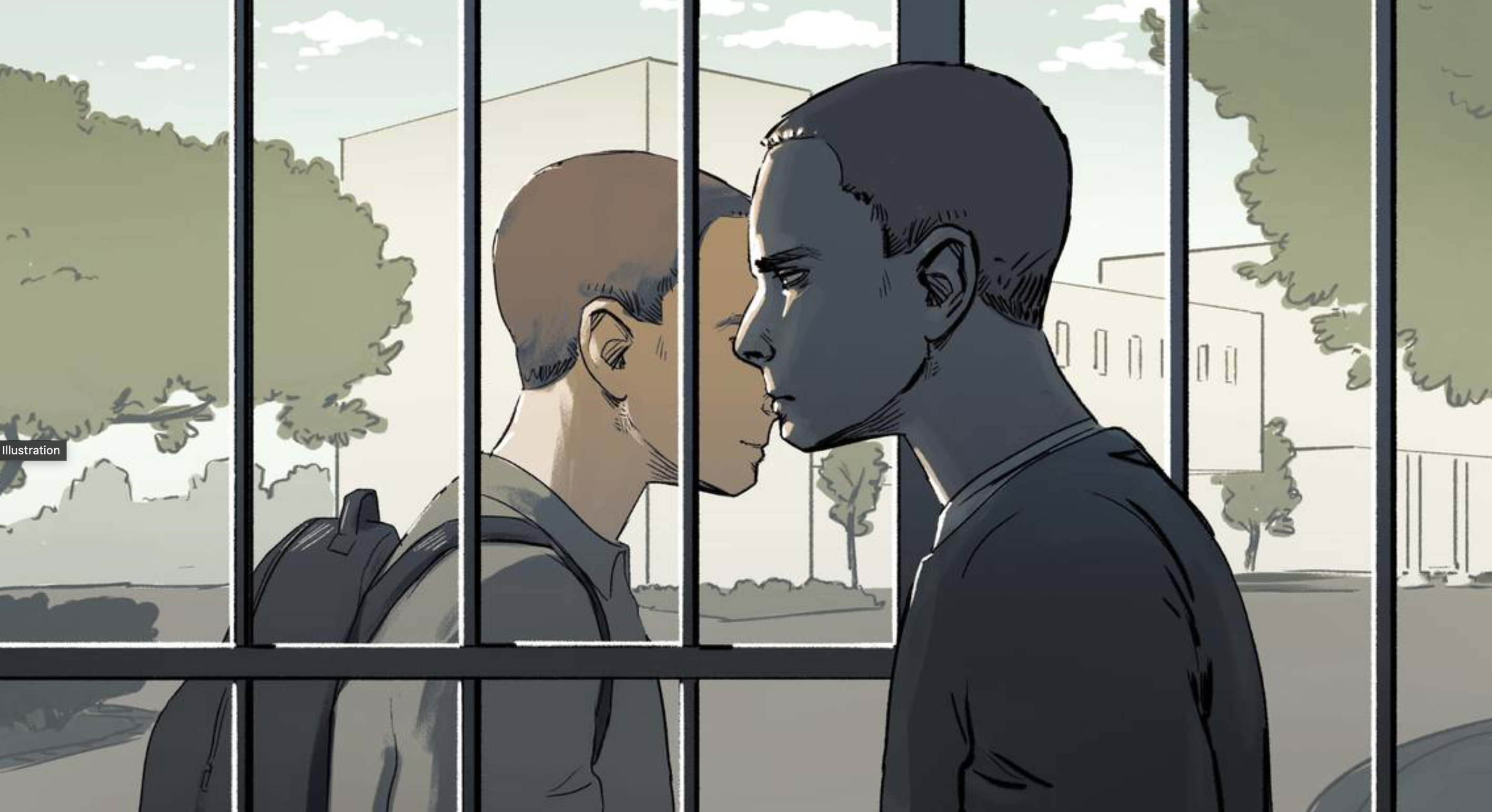Miami Herald wins September Sidney for Showing that Florida Kids Tried As Adults Receive Harsher Sentences than Adults for the Same Crimes
Shirsho Dasgupta of the Miami Herald wins the September Sidney Award for “Very disturbing’: Florida teens get longer prison sentences than adults.” This yearlong, data-driven investigation found that Florida kids convicted as adults get about 50% more prison time than adults convicted of the same charges.
On average, a child tried as an adult received just over 5 years for felony convictions, while an adult received 3.5 years. Children tried as adults were sentenced to a little more than three years in prison on average for third-degree felonies — around 50% longer than the average sentence given to adults for the same offense. The vast majority of felony convictions are for third-degree offenses. Children and adults had similar average sentences for more serious offenses that fall under first and second-degree felonies.
Danny Knight was sentenced to 40 years in prison for robbing a pharmacy and selling opioid pills at the age of 17. Knight asked for a “youthful offender” designation but was denied. Brendan Depa, a 17-year-old with severe autism and the emotional maturity of a 4-year-old, was charged as an adult for assaulting a teacher’s aide. His mother is begging the judge to send Brendan to a juvenile facility, because “[p]rison for him is a death sentence.”
Florida is one of only 13 states that allows prosecutors to try minors as adults without first seeking a judge’s permission. Judges still have the option to impose lesser punishments for minors, such as juvenile detention or bootcamp instead of adult prison, but Dasgupta found less than 10 percent of the 20,000 kids convicted of crimes in Florida between 2008 and 2022 received juvenile sanctions and less than 5 percent received a “youthful offender” designation.
Lynn Tepper, a former family court judge in Florida’s 6th Judicial Circuit described the story’s findings as “very, very disturbing.”
Prosecutors often push for more severe sentences for young offenders in the name of deterrence or rehabilitation, even though research shows harsher sentences make young offenders more likely to reoffend. “We expect kids to behave in certain ways and when they don’t, we find that deviation, for lack of a better word, to be more egregious than we would if they had been adults,” Dasgupta said in Hillman’s Backstory interview.
“Dasgupta showed great resourcefulness and perseverance in documenting a significant miscarriage of justice,” said Sidney judge Lindsay Beyerstein.
Shirsho Dasgupta is an investigative reporter whose stories mostly focus on legal and corporate accountability issues. His work has spurred investigations, influenced legislation and received numerous awards and citations from the National Press Foundation, the Overseas Press Club, Investigative Reporters and Editors, the Society for Advancing Business Editing and Writing and others.

Backstory
Q: Explain why juveniles who are tried as adults in Florida serve more time than adults who are convicted on the same charges?
A. The reasoning judges and prosecutors use may be different depending on the case but, in general, Florida does have a “tough love” attitude towards juvenile offenders that goes back decades. My reporting addressed how the state’s legal and judicial systems have an outdated belief that imposing tougher penalties deter future crime even though numerous criminologists have found that this pre-emptive approach is not only ineffective but that time behind bars coupled with the lack of opportunities for those with felony records after they are released only makes it more likely that a teen will become a more hardened criminal in future. Once a teen is tried as an adult, they are also subjected to the same sentencing guidelines that older, adult defendants contend with, including mandatory minimums. But judges do have the power to give them less punitive sentences like sending them to a bootcamp for a maximum of six years and prosecutors can always waive the mandatory minimums. That rarely happens.
Q: What prompted you to undertake this data analysis?
A: The stories are actually part of a larger investigation — “Juvenile Crime, Adult Time” — into the issue of “direct file”, a sweeping Florida law that gives the state’s prosecutors unfettered discretion to try children as adults. I was covering the outbreak of COVID-19 in Florida’s prison system in 2020 when I came across a teen who was in adult prison instead of the juvenile system after she was transferred via this law. I had looked into this issue on-and-off since then but it was only last summer that I finally conceptualized what became this yearlong investigation.
Q: What methods did you use to calculate sentences for teens tried as adults vs. adults?
A. I obtained, via a public records request, a copy of the Offender Based Transaction System (OBTS) maintained by Florida courts. The database contains records of every individual who has come into contact with the state’s legal system — from the point of arrest to their final sentence. Per Florida laws, only the month and year of birth for each individual — and not exact birth dates — were made available. To estimate the number of minors tried as adults, I assumed that each person recorded in the database was born on the 15th of the month. The total number of minors obtained through this method was similar to the number of children tried in adult court that I calculated from a separate dataset maintained by the Florida Juvenile Justice Department. Roughly 98% of those children were transferred to the adult system via “direct file.” To observe the frequency distributions of the sentences, I checked central tendency measures like medians, modes and standard deviations. I found that capital felonies, life felonies and first-degree felonies punishable by life imprisonment made up a tiny fraction of all offenses and typically have extreme sentences. These offenses were excluded from the analysis of average sentences. To further verify for consistency, I consulted with a University of Miami-based criminologist and adjusted for extreme sentences in the more common felonies so they don’t skew the figures while calculating the mean sentences of adults and minors tried as adults. The trend of teens getting stiffer sentences held even after these adjustments.
Q: There’s a stereotype that teens are tried as adults because they’re accused of particularly heinous crimes. Do you think that judges see young offenders in a more negative light because prosecutors decided to try them as adults?
A: It is hard to really generalize what judges think of course. But yes, there is a long history of the idea of the “super predator” that dates back to the 1990s that is still in play today and Florida’s lawmakers and those involved in the legal system tend to be more “tough on crime” than some other states which have moved away from trying children as adults in recent years. To ensure a conviction, prosecutors also sometimes paint a narrative that goes along the lines of, “The defendant is just a kid and committed this offense. Think about what they might end up doing as adults if we let them off easy now!” Of course, numerous studies have shown the opposite happens: Incarcerated kids are more likely to grow up and re-offend. I think in a more abstract sense, we expect kids to behave in certain ways and when they don’t, we find that deviation, for lack of a better word, to be more egregious than we would if they had been adults.
Q: Did anything unexpected happen in the reporting of this story?
A. I think the story itself was pretty unexpected. Let me explain: When I first started out on this project, I was looking into the history and enforcement of juvenile offenses in Florida and the implementation of the “direct file” statute (98% of the roughly 20,500 children tried in Florida’s adult courts instead of the juvenile system were prosecuted via this law). While reporting on Danny Knight’s story my initial plan was to write about how he has been stuck in limbo for years. But in the course of my reporting, I kept encountering teens who received sentences that seemed very excessive for the offense they had been convicted of. And that led me to look into sentencing in general. Even while I was writing up the code to analyze the average sentences, I really was not expecting to see a trend and assumed that my encounters with so many children with high sentences was just coincidence and represented egregious instances.
Q: Every successful investigation helps you grow as a journalist. What did you learn from this assignment that you’ll carry forward to the next story?
A. Perseverance. To do this story, and the project as a whole, I needed to engage with the current and former prison inmates as humans with backstories and not reduce them to just the alleged offense they had committed and the punishment they received. More importantly, I needed to see and write about them as kids because even though many of them are adults now, they were just teens, often growing up in difficult circumstances, at the time they were tried and sentenced. My editors, Ben Wieder and Jessica Lipscomb, kept pushing me to get more details about what their childhoods were like, what they enjoyed doing back then, what they miss the most now, how time in prison was affecting them and their hopes and aspirations for what they wish to do after they are released. It took a lot of time — spanning multiple conversations over many months — to develop these relationships and understand them as people. And of course, writing their stories without diminishing what they had done and the harm they caused towards their victims was also challenging.


